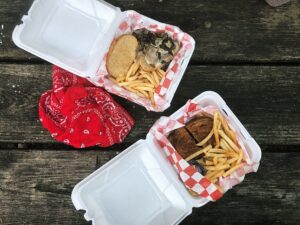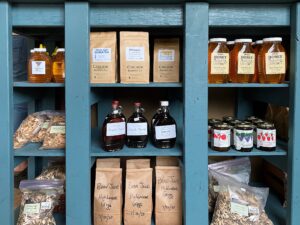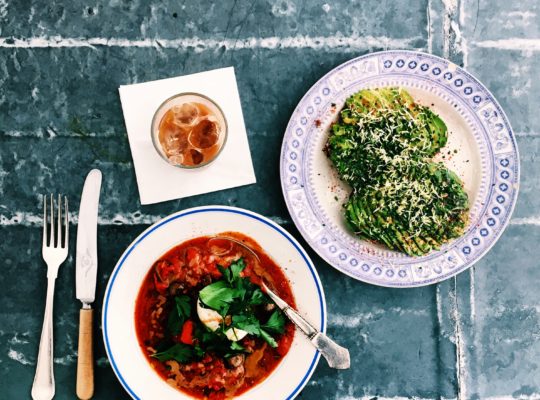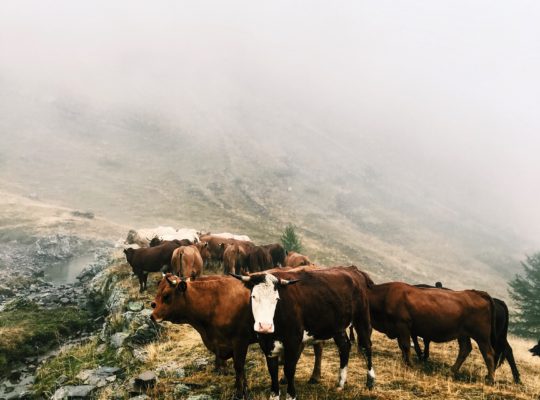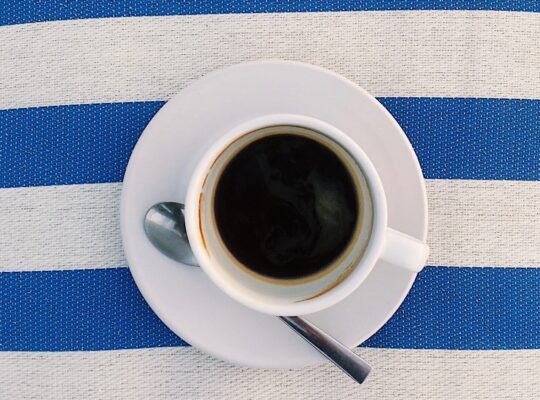
All the Butter
By Elisabeth Fondell
Growing up in the rural Midwest, my diet consisted of average, well-meaning food. My parents, both great cooks, cooked modest weeknight family meals, feeding the five of us while both working full-time. The weekend was cause for celebration as we observed family movie night with popcorn and Sunday dinner with pot roast, mashed potatoes, layered salad, and if we had company, angel food cake. I’ve always been big on tradition, and our food routines were no exception.
Outside of home, I was submerged in a culture of hotdish, Special K bars, pre-buttered ham sandwiches, the dreaded margarine, Cool Whip and its evil twin Cool Whip Lite, and an endless parade of social gatherings classically promising “lunch to follow” consisting of bars, lemonade, and coffee the color and consistency of hot water with two drops of molasses. It was uninspiring but familiar.
College was an eye-opener, for there I learned how to eat garbage all the time: pizza, bagels, cafeteria pecan pie, a midnight Wendy’s frosty, cookie dough straight from the tube, and an awful product discovered at the local Jewel-Osco called, Marshmallow Popcorn, which came with a packet of marshmallow goo and yes, it was as bad as it sounds.
After college came the frugal years. My roommate and I cooked simply and found it a huge treat to very occasionally buy a three-dollar container of cinnamon rice pudding made by the local Hispanic grocer. On rare occasions, we would share a $6 carton of General Tso’s Chicken from a nearby restaurant. The best discovery of this era was a neighborhood Vietnamese sandwich shop specializing in four-dollar lemongrass chicken banh mis.
Living in Chicago for eleven years exposed me to other cultures through the world atlas of food within walking distance. My neighborhood, said to be the most diverse zip code in the country at one time, was bursting with immigrant-owned restaurants. New words entered my vocabulary: elotes, carne asada, tom yum, edamame, khao soi, baklava, unagi, horchata, torta, falafel, cevapcici, pad see ew. My culinary knowledge and taste buds began to bloom.
Then my path shifted, and I moved back to my small hometown in rural Minnesota. I continued my culinary exploration, slightly adapted. The local grocery store had Napa cabbage and fresh ginger, enough to get batches of kimchi going in my fermentation crocks. Neighbors provided excess produce spurring me on to celebrate the complexity of each individual vegetable, making olive oil & bittersweet chocolate squash cake, smoky squash sauerkraut, and squash gnocchi. On the occasional trip to “the big city,”which could be anything greater than 10,000 in population, I would stock up on leeks, turmeric root, lamb, full-fat yogurt, Meyer lemons, and halloumi, foods not available at our tiny grocer that closes at 4pm on Sundays.
I began to make the foods I missed. Anything could be done with substitutions. I learned to just try the recipes, even without the perfect ingredients. I learned to be bold and proceed confidently in the kitchen by focusing on texture and color.
I use butter daily and encourage everyone to embrace real, whole foods. Bacon grease, chicken drippings, beef tallow, heavy whipping cream, full-fat yogurt – nothing is too fatty. My new mantra, which I stole from Michael Pollan, is if I make it from scratch with the best whole ingredients I can find, it’s fair game.
Because after all, cooking is our way of connecting with the world around us. As we sit at tables with our family, our friends, our fellow community members, we are engaging in a divine act. Our food is part of us. As the age old saying goes, we are indeed what we eat. So make it worthwhile. Enjoy your full-flavored food heartily with passion. Your body will thank you.





